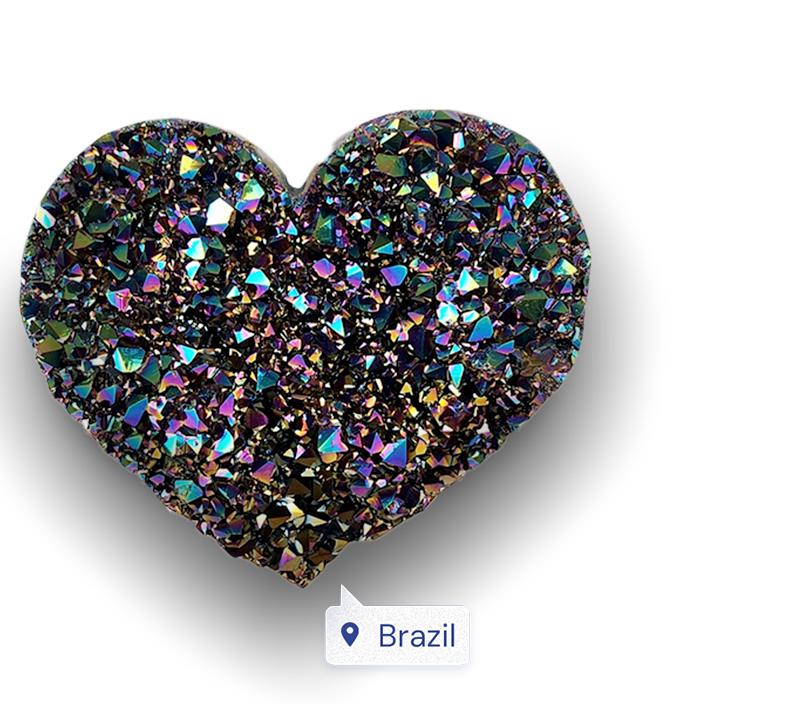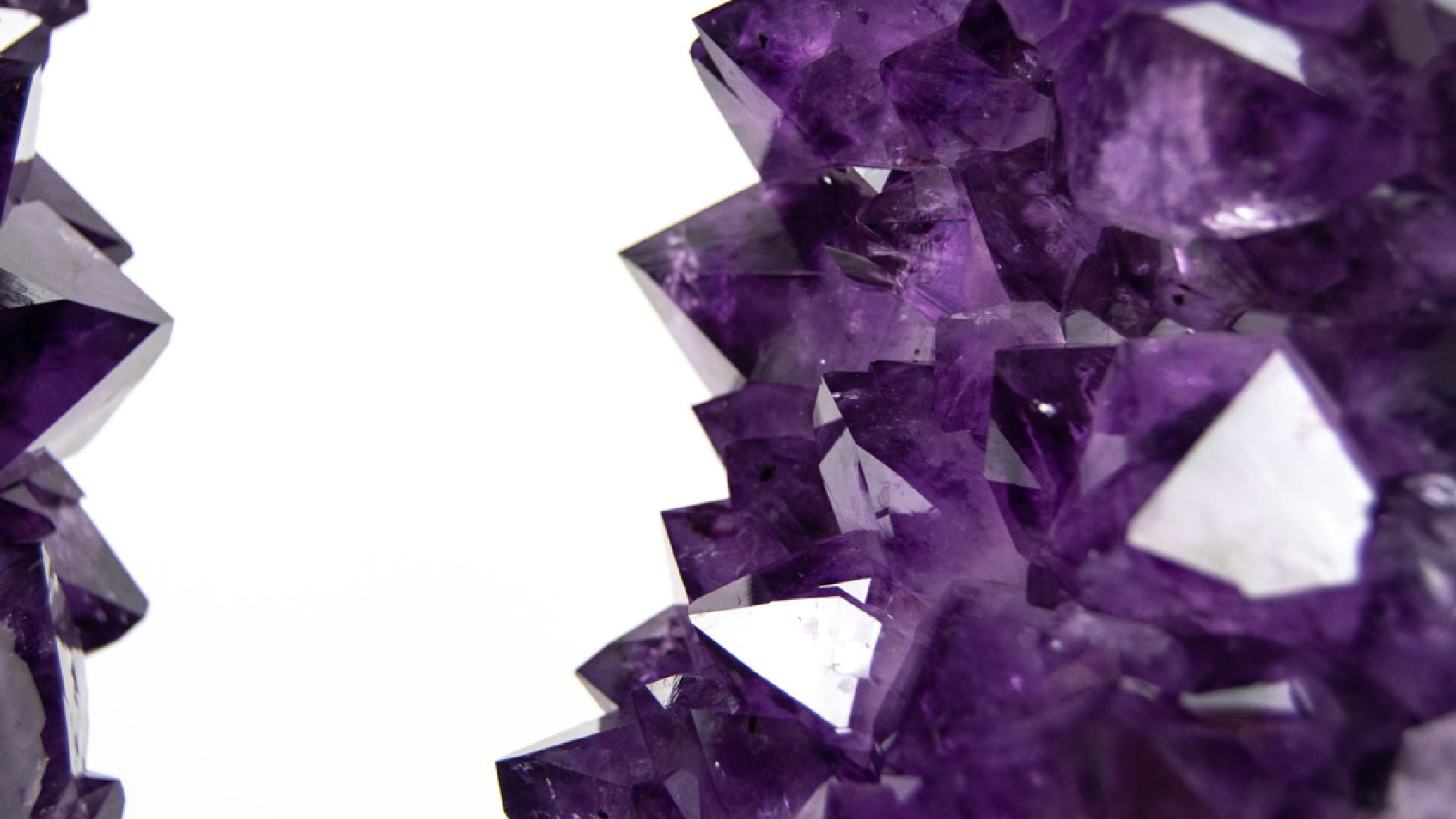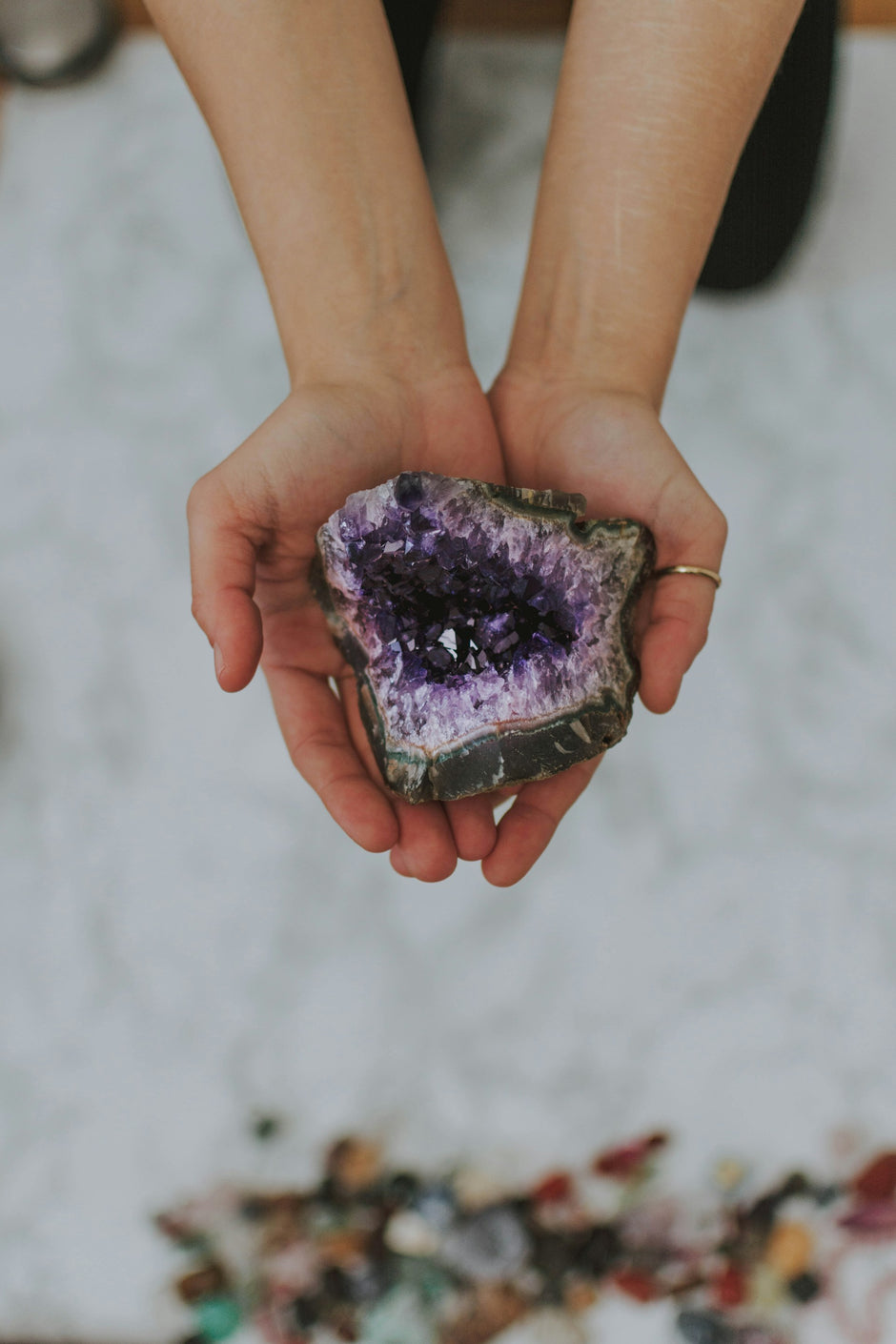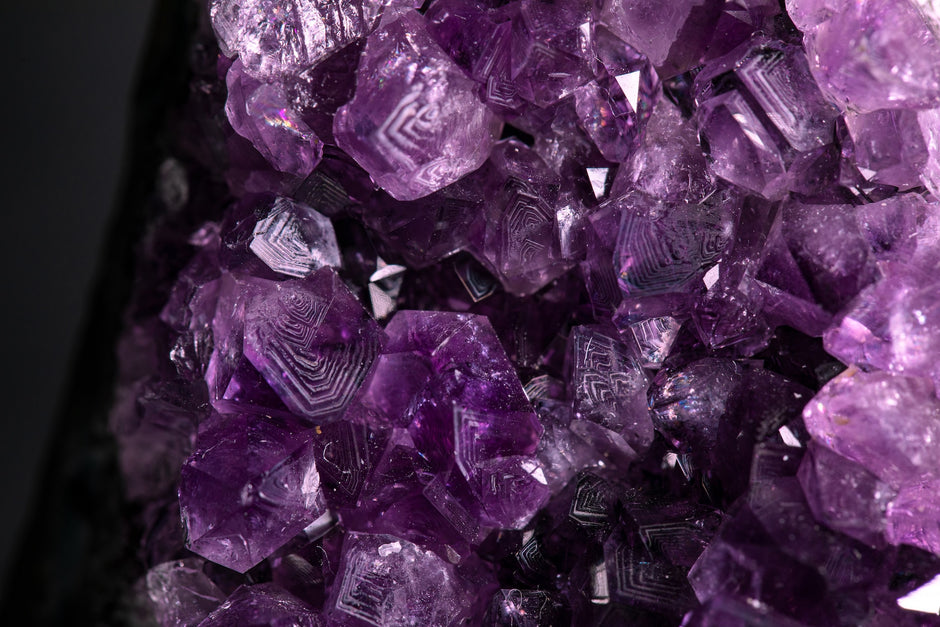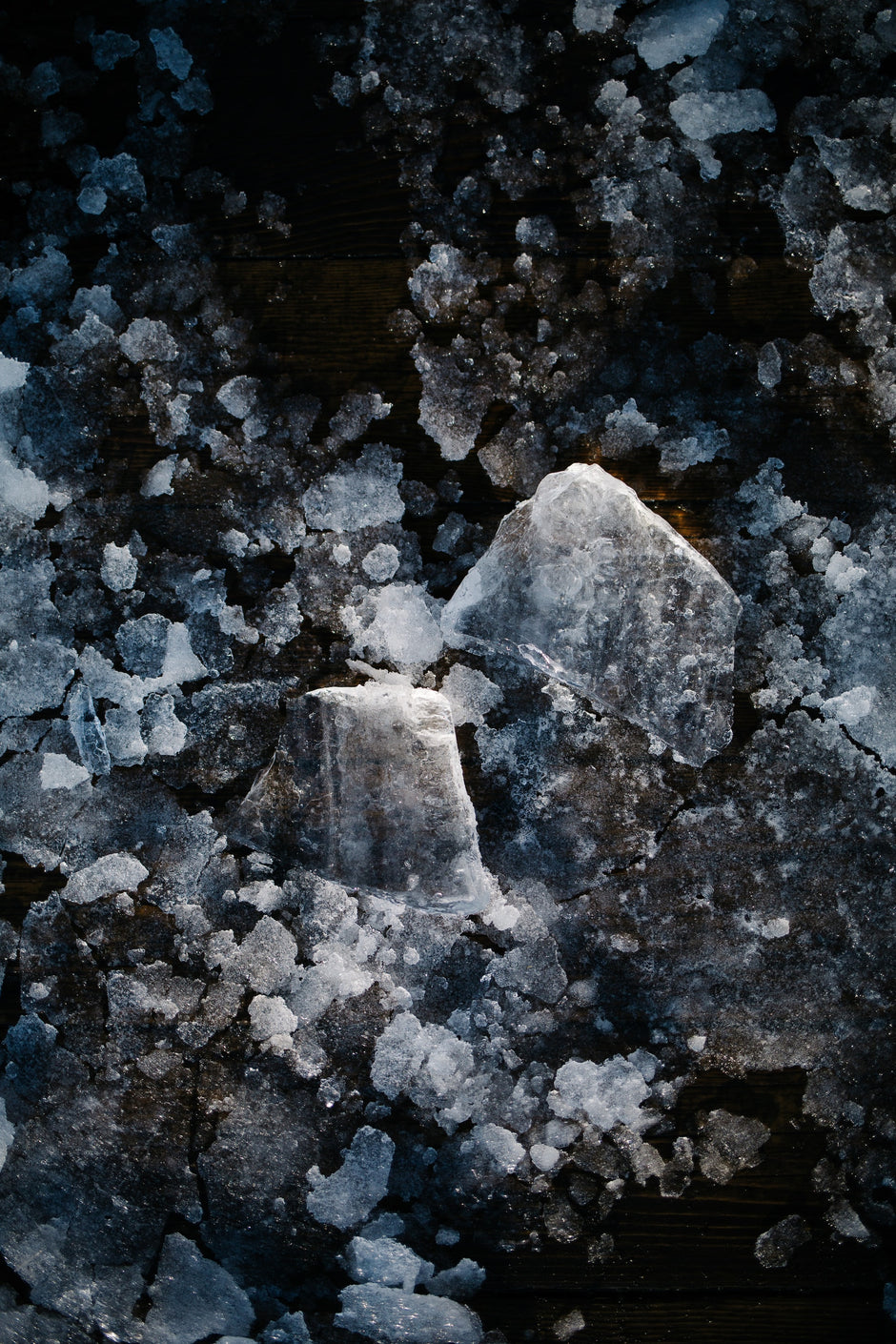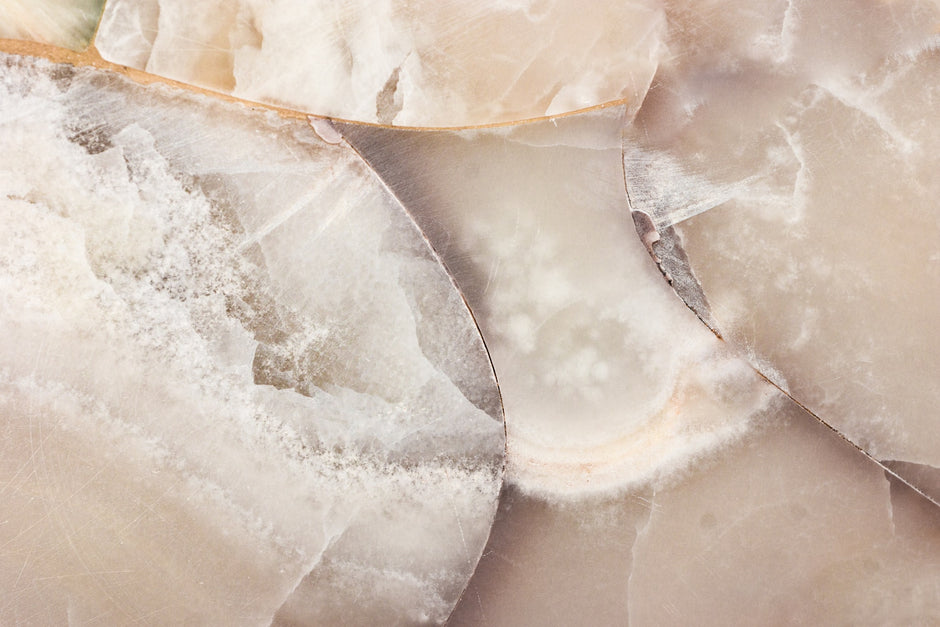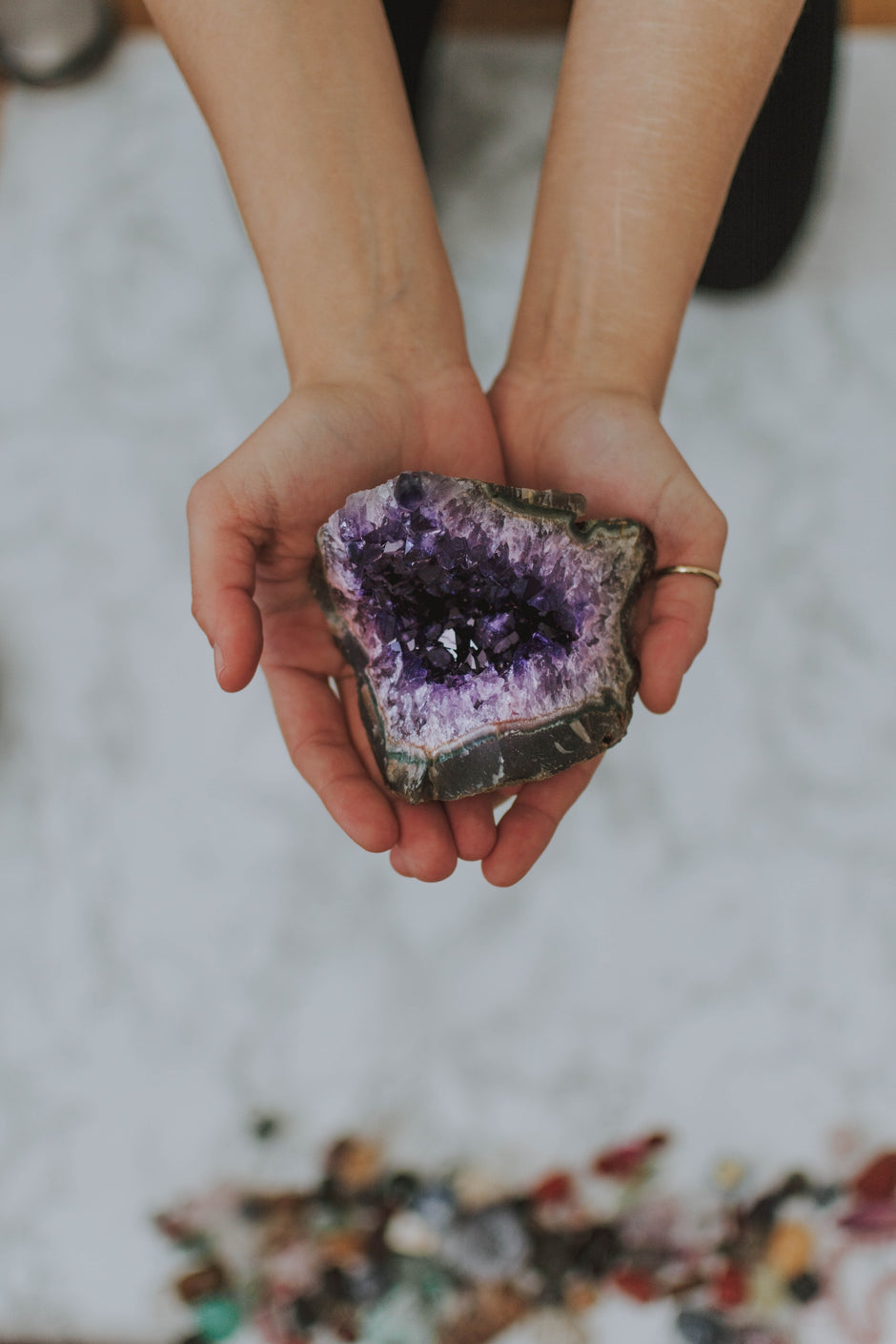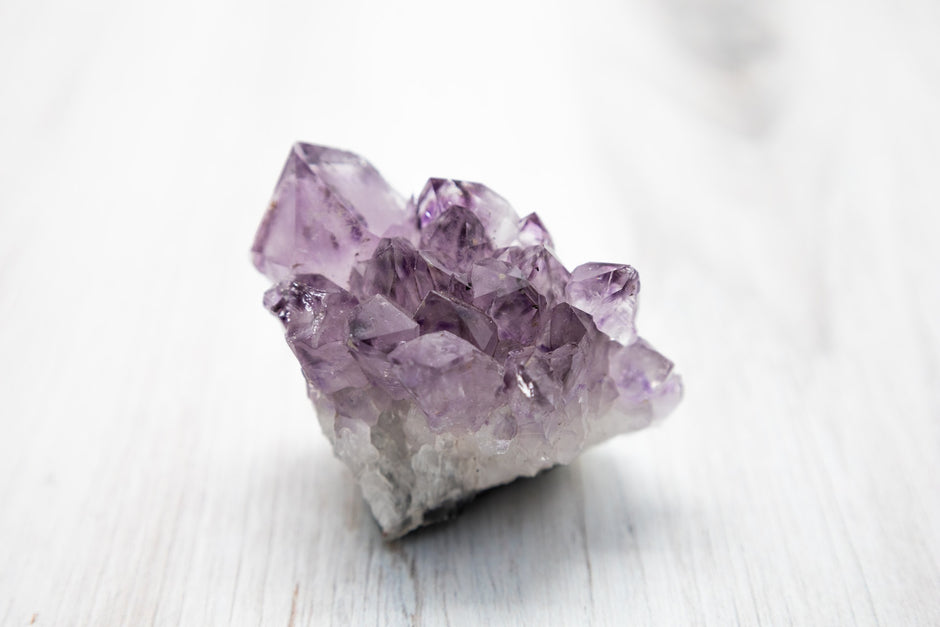Ever been curious about those gorgeous purple gemstones that people just can't get enough of? Well, you're in for a real treat! This guide is all about diving headfirst into the enchanting world of these precious gems.
Imagine building your very own collection of stones, each boasting its own unique shade of purple – from soft, soothing tones to deep and mysterious hues. But here's the real kicker: these gems aren't just easy on the eyes, they're also incredibly rare and hold a special place in the hearts of many.
In the pages ahead, we're setting out to explore the stories behind some of the most stunning purple gemstones you'll ever lay eyes on, and we'll uncover exactly what makes them so incredibly special.
Rarest Purple Gemstones
Purple Diamonds
- Where It's Found: Russia's Yakutia mines, Australia's Argyle mine, and some areas of Brazil.
- Value: Highly valuable, with prices ranging from $100,000 to $200,000 per carat.
- Historical Significance: Purple diamonds have been associated with royalty for centuries.
- Uses: High-end jewelry, investment portfolios.
- Unique Factors: Their color is usually due to hydrogen-rich deposits.
Purple Spinel
- Where It's Found: Myanmar, Sri Lanka, and Tajikistan.
- Value: Moderately priced at $500 to $1,500 per carat.
- Historical Significance: Used in crown jewels for centuries.
- Uses: Jewelry, ornamental pieces.
- Unique Factors: Often mistaken for other gemstones like ruby and sapphire.
Purple Sapphire
- Where It's Found: Sri Lanka, Madagascar, and parts of Australia.
- Value: High value, ranging from $1,000 to $5,000 per carat.
- Historical Significance: Believed to bring spiritual enlightenment.
- Uses: Engagement rings, necklaces, and other high-end jewelry.
- Unique Factors: Known for their vibrant hue and high durability.
Purple Amethyst
- Where It's Found: Brazil, Uruguay, and parts of Africa.
- Value: Affordable, between $20 to $50 per carat.
- Historical Significance: Associated with the Greek god Dionysus, and believed to prevent drunkenness.
- Uses: Widely used in everyday jewelry.
- Unique Factors: Part of the quartz family, and available in a range of purple shades.
Purple Iolite
- Where It's Found: India, Sri Lanka, and Madagascar.
- Value: $50 to $150 per carat.
- Historical Significance: Used by Vikings for navigation.
- Uses: Bespoke jewelry.
- Unique Factors: Known as the 'water sapphire', it can appear as different colors when viewed from various angles.
Purple Garnet
- Where It's Found: Kenya, Tanzania.
- Value: $300 to $500 per carat.
- Historical Significance: Known for its rejuvenating properties in folklore.
- Uses: Collector’s item, occasional jewelry pieces.
- Unique Factors: Often found in a blend of red and purple shades.
Purple Zoisite (Tanzanite)
- Where It's Found: Only in the Merelani Hills of Tanzania.
- Value: $300 to $700 per carat.
- Historical Significance: Discovered in 1967, relatively new to the gem market.
- Uses: High-end jewelry and collector's item.
- Unique Factors: Depleting reserves make it increasingly valuable.
Purple Taaffeite
- Where It's Found: Myanmar and Sri Lanka.
- Value: Extremely rare, up to $4,000 per carat.
- Historical Significance: Named after gemologist Richard Taaffe.
- Uses: Mainly a collector’s gemstone.
- Unique Factors: Often mistaken for spinel until properly identified.
Purple Idocrase
- Where It's Found: Italy, United States.
- Value: $50 to $100 per carat.
- Historical Significance: Not significant historically due to its rarity.
- Uses: Unique, bespoke jewelry.
- Unique Factors: Known for its vitreous luster and is rarely seen in mainstream jewelry.
Popular Purple Gemstones Used in Jewelry
Purple gemstones are an elegant and captivating choice when adorning yourself with dazzling jewelry. These gems are not only known for their stunning color but also their versatility in different kinds of jewelry settings and cuts. Let's explore some of the most popular purple gemstones that often grace necklaces, earrings, rings, and bracelets.
Purple Amethyst
- Cuts: Oval, Cushion, and Round cuts are commonly seen.
- Settings: Claw, Bezel, and Pave settings work well to display its color.
- Characteristics: Its versatility and affordability make it a popular choice for both everyday wear and statement pieces.
Purple Sapphire
- Cuts: Brilliant Round, Princess, and Pear cuts are popular.
- Settings: Prong and Channel settings often used to elevate its elegance.
- Characteristics: Known for its rich hue and durability, making it a favored choice for engagement rings.
Purple Iolite
- Cuts: Trillion, Heart, and Emerald cuts offer unique looks.
- Settings: Tension and Bezel settings are commonly used for a modern appearance.
- Characteristics: Its changing colors depending on the angle add a unique feature when set in jewelry.
Purple Garnet
- Cuts: Standard Round, Oval, and Radiant cuts are often chosen.
- Settings: Halo and Prong settings best showcase its red and purple shades.
- Characteristics: A unique and uncommon choice, offering a blend of rich colors.
Purple Zoisite (Tanzanite)
- Cuts: Cushion and Princess cuts are widely used to enhance its brilliance.
- Settings: Claw and Bezel settings offer secure ways to showcase this gem.
- Characteristics: Its rarity and unique bluish-purple tint make it a collector’s item, often set in high-end jewelry.
Purple Spinel
- Cuts: Asscher and Marquise cuts offer a unique and modern look.
- Settings: Pave and Tension settings are often selected for a contemporary touch.
- Characteristics: Frequently mistaken for sapphires, offering an affordable yet glamorous option.
Different Cuts and Settings
When it comes to cuts, the Brilliant Round cut is universal for maximizing brilliance but specific gems might benefit from more unique cuts. For instance, the Asscher cut is perfect for a modern aesthetic, especially when paired with a Tension setting.
Settings like Prong and Claw are classic and provide good security, while Pave and Bezel settings offer a more integrated look, embedding the gem into the piece.
Whether you're shopping for a timeless heirloom or a contemporary piece of fashion, these purple gemstones offer versatile options to cater to every taste and occasion. Their various cuts and settings allow for a customized and personalized piece, making each gemstone not just a purchase but an investment in style and elegance.
Ancient and Historic Purple Gemstones: A Journey Through Time
The allure of purple gemstones isn't just a modern fascination; these captivating gems have been treasured throughout history for various symbolic, cultural, and practical reasons. Let's delve into some lesser-known but historically significant purple gemstones.
Purple Jasper
- Historical Significance: Used in ancient Egyptian amulets and Mesopotamian cylinder seals.
- Cultures: Highly valued in ancient Egypt for its supposed healing and protective properties.
- Uses: Often carved into intricate talismans and jewelry, especially rings.
Purple Jasper has been admired for millennia for its robustness and earthy beauty. The Egyptians and Mesopotamians both utilized this gemstone for religious and aesthetic purposes.
Charoite
- Historical Significance: Discovered in Russia and named after the Chara River.
- Cultures: Mainly connected to Russian folklore, where it’s said to bring good fortune.
- Uses: Primarily used for ornamental carvings and amulets.
Charoite, with its swirling lavender hues, is relatively new compared to others on this list. However, it has quickly made its mark by becoming ingrained in Russian folklore and handicrafts.
Lepidolite
- Historical Significance: Known as a 'peace stone,' it has been around for centuries but gained prominence in the 18th century.
- Cultures: Used globally but notably in Native American rituals for its calming properties.
- Uses: Commonly seen in decorative bowls, pendants, and even as a raw specimen.
While not strictly confined to any single culture, Lepidolite has been used in various spiritual practices, notably Native American ceremonies, to promote peace and harmony.
Ametrine
- Historical Significance: A unique blend of Amethyst and Citrine, it has roots in the Spanish conquest of South America.
- Cultures: Gained popularity among the Spanish nobility in the 17th century.
- Uses: Mostly used in unique jewelry pieces to showcase its dual colors.
Ametrine is historically tied to the colonization of South America. Legend has it that a Spanish conquistador discovered the gem and introduced it to the European world, where it was quickly adopted into royal jewelry.
Distinctive Light Purple Gemstones: The Softer Side of Royalty
The elegance of light purple gemstones lies in their subtlety and the unique qualities that make them less imposing yet equally enchanting. Let's explore some of these soft-hued wonders:
Lavender Jade
- Color: Features a delicate lavender hue that leans more towards a pastel shade.
- Clarity: Opaque with a waxy to vitreous luster.
- Unique Feature: Known for its soothing energy, often linked to spirituality and purification.
Lavender Jade doesn't just offer visual beauty; it's also known to promote emotional balance, making it a popular choice for meditative practices.
Purple Chalcedony
- Color: Pale purple with smoky undertones.
- Clarity: Translucent with a waxy luster.
- Unique Feature: Valued for its durability and adaptability in various jewelry settings.
Purple Chalcedony can easily be molded into intricate designs, making it a favorite for artisanal jewelry pieces.
Purple Kunzite
- Color: Light pinkish-purple that shines brilliantly under light.
- Clarity: Transparent with a vitreous luster.
- Unique Feature: Known for its strong pleochroism, displaying different color intensity from different angles.
Purple Kunzite is especially popular in delicate, light-catching settings like dangling earrings or pendant necklaces.
Deep and Rich Dark Purple Gemstones: The Height of Drama and Elegance
Dark purple gemstones resonate with depth and gravitas. These gems are captivating in their intensity and bring an added layer of drama to any jewelry piece.
Purple Fluorite
- Color: A rich, dark purple that can appear almost black in certain lights.
- Clarity: Transparent to translucent with a vitreous luster.
- Unique Feature: Often displays a fluorescence under ultraviolet light.
Purple Fluorite is a fascinating stone that adds an element of mystery to any setting, particularly effective in cocktail rings or statement necklaces.
Sugilite
- Color: Deep purple, often with black or brown inclusions.
- Clarity: Opaque with a waxy to resinous luster.
- Unique Feature: Known for its rarity and is sometimes referred to as "the healer's stone."
Valued not just for its color but also its healing properties, Sugilite is usually set in solid, heavy pieces like cuff bracelets or brooches to emphasize its weight and depth.
Purple Tourmaline
- Color: Dark violet with a hint of blue or red.
- Clarity: Transparent with a vitreous luster.
- Unique Feature: Often found in multi-colored specimens, adding complexity and depth to the gemstone.
Purple Tourmaline is well-suited for various types of cuts and settings, making it highly versatile for anything from earrings to elaborate necklaces.
Purple Gemstones: Meaning and Benefits
The allure of purple gemstones extends beyond their visual splendor. Historically and culturally, the color purple is associated with royalty, spirituality, and mysticism. The metaphysical properties of these captivating stones are often considered just as important as their physical characteristics.
Healing
- Amethyst: Known as the "stone of spirituality," it's often used in meditation to open the third eye and crown chakras.
- Sugilite: Sometimes called "the healer’s stone," it's believed to enhance the ability to channel healing energies.
Protection
- Purple Jasper: Traditionally used as a talisman against harm and said to provide spiritual protection.
- Purple Tourmaline: Known for its protective energies, especially against environmental stressors like electromagnetic fields.
Other Positive Qualities
- Lavender Jade: Believed to purify the aura and eliminate negative energies.
- Purple Sapphire: Often associated with wisdom and is said to facilitate self-discipline.
Conclusion
Purple gemstones are not just a feast for the eyes but also rich in symbolism and metaphysical properties. Whether you're attracted to the serene light purples or the intense dark tones, these gemstones offer a wide array of options for both aesthetic and spiritual fulfillment. Purple gemstones continue to captivate and inspire with their unmatched beauty and deep-rooted meanings, solidifying their status as a treasure in both the tangible and metaphysical world.
Frequently Asked Questions about Purple Gemstones
Are purple gemstones rare?
- Yes, naturally occurring purple gemstones like Purple Diamonds and Purple Taaffeite are rare, often increasing their value.
Are purple gemstones durable?
- Stones like Purple Sapphire and Purple Spinel are known for their excellent durability and are suitable for everyday wear.
Are purple gemstones a good investment?
- Due to their rarity and increasing popularity, certain purple gemstones can be a promising investment. However, it's crucial to get a certified appraisal before purchasing.
How to care for purple gemstones?
- Most purple gemstones can be easily cared for with mild soap and water. However, some like Amethyst can fade over time when exposed to direct sunlight.
What about lavender-colored gems?
- Lavender Jade and Purple Kunzite are popular choices for those who prefer a softer hue. These stones offer a delicate palette while retaining deeper purples' symbolic meanings.
